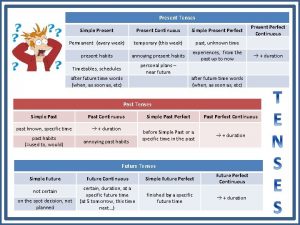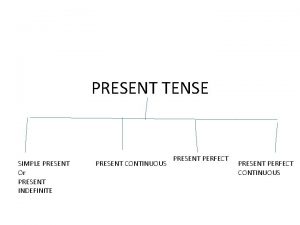Monitoring Present and Future Pedro Andrade CERN IT
























- Slides: 24

Monitoring: Present and Future Pedro Andrade (CERN IT) pedro. andrade@cern. ch 31 st August 2012 Grid. Ka School – Karlsruhe, Germany CERN IT Department CH-1211 Genève 23 Switzerland www. cern. ch/it

Outline • What’s / Why Monitoring ? • Terminology and Architecture • Technologies and Tools • WLCG and CERN Examples • Current Problems & Future Solutions 2

What’s Monitoring ? “Observe and check the progress or quality of something over a period of time. ” Google define “Capability to execute continuous observance and analysis of the operational state of systems and provide decision support regarding situational awareness and deviations from expectations. ” US National Institute of Standards and Technology 3

Why Monitoring ? It’s a core IT function The value of a service to an organization is proportional to the availability of the service It’s powerful Understanding and using monitoring data correctly gives a competitive advantage It’s fun Many people enjoy looking to nice dashboards and graphs of service status and availability 4

What’s the challenge ? Define the monitoring scope and coverage Understand the services dependencies Define the correct monitoring toolchain Define what to do with monitoring data Do not forget the evolving infrastructure 5

Terminology Many tools in the market… vast terminology ! collection probes metric context analytics dashboards correlation event resource probe 6

Terminology Terms must be categorized Monitored Elements • • • Services Nodes Network Data … Monitoring Code • • • Probes Tests Sensors Agents … Monitoring Tasks • • • Aggregation Collection Reporting Probation … Monitoring Outputs • • • Notifications Alarms Dashboards Reports … 7

Terminology Probe • test code to check the status of a given attribute Metric • probe execution result (numeric/boolean data point) Context • metadata about a metric Event • metric combined with the context Notification • result of processing an event 8

Architecture Probation Aggregation Computation Presentation • • • • • Probes Tests Sensors Active/Passive Continuous Collection Synchronization Repository Catalog Trending Filtering Grouping Tagging Correlation Alarms Notifications Reports Dashboards APIs 9

Architecture Monitoring data is the core – Data transport, data storage, data format Probes should be kept as simple as possible – Clear focus with simple computing logic Scalability can be addressed in different ways – Horizontally scaling – Adding other layers: pre-aggregation, pre-processing Different tools for different layers of the architecture – Many tools available in the market – Each individual tool must be easily replaced – Based on standard protocols 10

Technologies and Tools Monitoring frameworks are the core technology – – Configure the environment you want to monitor Schedule the execution of probes Provide some degree of reporting/notification Several types of solutions available More complex scenarios may require other technology – Messaging for data transport and data aggregation • Active. MQ, Apollo, Rabbit. MQ, etc. – No. SQL for data analysis and data storage • Hadoop, HBase, Cassandra, etc. – Many tools available for data analysis/presentation 11

Technologies and Tools 12

Technologies and Tools • New Relic • Librato Metrics Saa. S • Pingdom • Pager. Duty • Splunk • • • Graphite Statsd Riemann Logstash … Open Source 13

Monitoring @ WLCG The Worldwide LHC Computing Grid (WLCG) is a distributed infrastructure composed by 152 sites and >320, 000 logical CPUs serving the computing needs of WLCG VOs. It brings together resources provided by the EGI and OSG infrastructures. Multi-organization infrastructure, few services. Monitoring is based on the SAM system: – SAM-Nagios testing sites and services (for VOs/NGIs) – SAM-Gridmon aggregating/computing monitoring data – WLCG Dashboards providing dedicated portals to VOs 14

Monitoring @ WLCG External Sources (EGI, OSG) WLCG Dashboards MYWLCG SAM-Gridmon Active. MQ Italy NGI SAM-Nagios France NGI SAM-Nagios ATLAS VO SAM-Nagios Site A (Italy, CMS) Site B (France, CMS) Site C (France, ATLAS) 15

Monitoring @ WLCG Some statistics – – 236 probes for operations and VO checks +4000 service endpoints being tested 41 NGI SAM-Nagios + 4 WLCG VO SAM-Nagios 500 k metrics results processed per day Key features – – – Based on open source systems: Nagios, Active. MQ Distributed responsibility for tests execution: NGIs, VOs Centralized computation of status and availability Supports integration of 3 rd party monitoring systems Provides web REST API to consume monitoring data 16

Monitoring @ CERN Computer Centre houses servers and data storage systems for the WLCG Tier-0, physics analysis, and other CERN services. It currently provides 30 PB storage on disk and 65, 000 cores (plus 20, 000 cores and 5, 5 PB of storage from new Computer Centre in Budapest). Single-organization infrastructure, many services. Monitoring is based on the Lemon system plus many application specific tools. A new monitoring architecture is being defined under the AI project. 17

Monitoring @ CERN Splunk Wep. App 1 SNOW Hadoop Analysis/Storage Feed Alarm Feed Custom Feed Apollo Sensor 1 Sensor 2 Application 1 Application 2 18

Monitoring @ CERN Prototype system for new architecture being implemented and tested (no statistics for now). Key features – – – Based on open source systems: Hadoop, Apollo, etc. Distributed responsibility for probes execution High scalability based on messaging: Apollo Centralized storage and analysis cluster: Hadoop Powerful and highly configurable dashboard: Splunk Real time feed for notifications and alarms 19

Current Problems Tools complexity – Web interfaces full of “traffic lights” ! • Can we actually get anything out of there ? – No automation of configuration • Should be better integrated with configuration systems Toolchain diversity – One single tool is not enough (most of the time!) – Orchestration of different tools difficult to implement Low quality of processed monitoring data – Incorrect notifications can be easily seen as SPAM 20

Current Problems Monitoring granularity – Most of the times based on hosts – Why can’t we have other 1 st class monitoring elements? Sources of truth – Different tools hold different databases of hosts/services – Is there a master? Are there copies? Cache data? Timing (depends of tool!) – Long intervals between checks, high latency 21

Future Solutions Should target at – – Easy and reliable access to monitoring data Simple and reliable dashboards and APIs Correctly targeted real-time notifications Enable complex queries between different data sets 22

Future Solutions Well designed monitoring toolchain – Appropriate for the infrastructure being monitored Consider alternatives to monitoring frameworks – Messaging infrastructure as transport layer Give top priority to the monitoring data ! – Single data format, flexible schema – Store all monitoring data (incl. historical) for analysis – Feed the system with curated monitoring data 23

Thank You ! 24
 Future perfect vs future continuous exercises
Future perfect vs future continuous exercises Future simple continuous perfect
Future simple continuous perfect Present simple timetables
Present simple timetables Present past future simple present continuous exercises
Present past future simple present continuous exercises Present simple present continuous past simple future simple
Present simple present continuous past simple future simple Present simple present continuous past simple
Present simple present continuous past simple Present perfect in passive
Present perfect in passive Passive in present continuous
Passive in present continuous Present simple future simple past simple exercises
Present simple future simple past simple exercises Present simple passive vs present continuous passive
Present simple passive vs present continuous passive Cern future circular collider
Cern future circular collider Present simple present continuous and present perfect
Present simple present continuous and present perfect Future perfect and future continuous examples
Future perfect and future continuous examples Perfect infinitive
Perfect infinitive Future plans and finished future actions
Future plans and finished future actions Future continuous and future perfect
Future continuous and future perfect 1 2 3 kondicional u engleskom jeziku
1 2 3 kondicional u engleskom jeziku I wish present
I wish present I write a letter now past continuous tense
I write a letter now past continuous tense Present perfect conjugation
Present perfect conjugation Present perfect continuous cand se foloseste
Present perfect continuous cand se foloseste Relative clause noredink
Relative clause noredink Present perfect continuous passive
Present perfect continuous passive Present simple present continuous present perfect
Present simple present continuous present perfect Present perfect future tense
Present perfect future tense














































